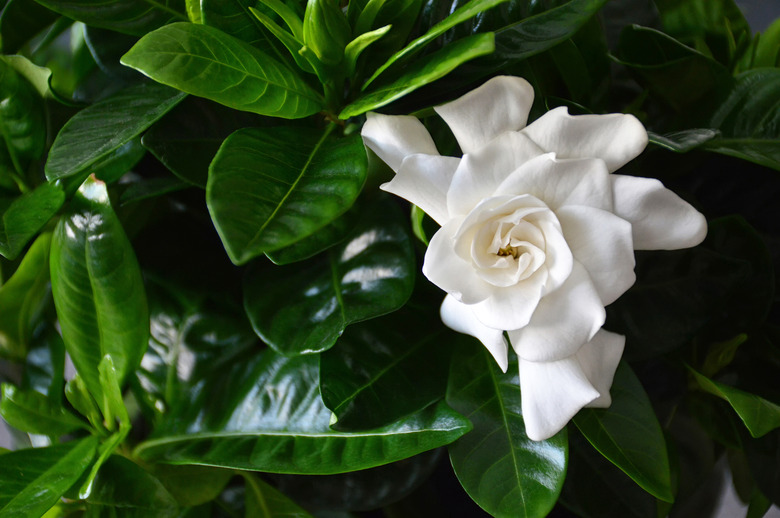How To Grow Gardenias From Seed
We may receive a commission on purchases made from links.
Of all the fragrant plants to grow in your garden, gardenias (Gardenia jasminoides, USDA zones 7-11) may be the cream of the crop. Originally from China, these evergreen flowering shrubs have been in cultivation for more than 1,000 years. In America, gardenias became a popular specimen plant during the 1920s and 1930s, when they were highly coveted for their use in corsages and in fresh flower arrangements. Although gardenias are typically started from cuttings, these charming flowers can also be grown from seed, though germination tends to be sporadic and they take two to three years to flower when grown from seed. It's important to note, however, that hybrid cultivars may not set seed; and even if they do, the resulting plants may not have the same desirable qualities as the plant that produced the seeds.
Germinating Gardenia Seeds
1. Collect the Seed Pods
Collect the seed pods from an established gardenia plant. You'll know the seed pod is ready for collecting when it is approximately 1 1/2 inches in diameter and is dark colored.
2. Extract the Seeds
Cut open the pod to remove the gardenia seeds. You can pick out the seeds using your fingers or a pair of tweezers.
3. Rinse the Seeds
Place the seeds into a fine wire basket/colander. Rinse the seeds under cool tap water to remove any residue from the seed pod. Pat the seeds dry.
4. Dry the Seeds
Transfer the dry seeds into a paper sack. Leave the sack in a cool location to let the seeds dry further for about 20 to 30 days.
5. Prepare the Potting Mix
Mix together equal amounts of perlite and peat moss, in a large basin or bucket. Remove any clumps, pebbles or large pieces of debris.
6. Fill the Pots
Scoop the sifted mixture into 4-inch plastic pots. Soak the pots in a basin or bucket in about 2 inches of water. Let the perlite and peat moss mix absorb enough of the water that it becomes visibly well moistened. Set the pots aside to drain excess moisture.
7. Sow the Seeds
Sow two to three gardenia seeds in each of the pots. Use the eraser end of a pencil to press the seeds into the growing media but avoid completely burying the seeds. Sprinkle a light layer – about 1/8 inch – of the growing media over each seed. Keep the seeds moist and out of direct sunlight. Germination will begin in four to six weeks.
8. Transplant the Seedlings
Transplant the gardenia seedlings once they each have about two to three sets of leaves. Most varieties of gardenias cannot tolerate temperatures below 30 degrees Fahrenheit. Unless you live in tropical areas, plant gardenias in containers so you can over-winter them indoors.
Transplanting and Growing Gardenias
1. Choose a Location
Place a suitably sized growing container in full sun, appoximately 6 hours each day. If you live in a warm climate, gardenias will appreciate some shade from the sun in the afternoon. A good location may be a patio or deck, where you can enjoy the delightful fragrance of the gardenia blossoms. Ideally, the container should be large enough to allow the gardenia to grow, but not so large that you cannot transport it indoors during inclement weather.
2. Fill the Container
Scoop a good quality potting mix into the growing container to fill it about halfway.
3. Remove the Seedling From the Pot
Remove a gardenia seedling from a 4-inch pot. Do this by gently turning the pot on its side. Use a small mallet and tap the rim of the pot until you can slide it from the roots.
4. Plant the Seedling
Plant a gardenia seedling into its new growing container. Scoop soil in and around the seedling until the container is full to about 1 inch from the top of its rim.
5. Ensure Proper Moisture
Water the gardenia thoroughly until you're certain the growing media has been well drenched. Plan on watering twice weekly for the first six weeks after planting. Then let the soil dry out between waterings. When watering, thoroughly soak the soil.
6. Fertilize the Plants
Fertilize gardenias once a month during the growing season. Use a fertilizer made for gardenias, such as 7-9-5, to encourage plentiful blossoms and prevent root diseases.
